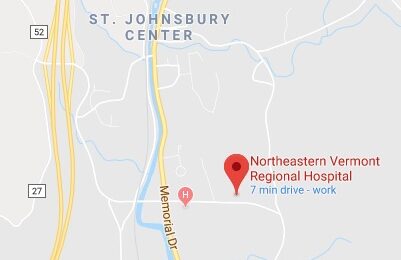Vermont Ranked Healthiest State in the Nation
In December 2019, the United Health Foundation released the 30th edition of America’s Health Rankings® Annual Report, and in it, Vermont is ranked as the healthiest state in the nation, up from the third healthiest state last year.
The report provides a state-by-state analysis of the nation’s health, and each state’s score is the result of 35 measures across five categories of health: behaviors, community & environment, policy, clinical care and outcomes.
The America’s Health Rankings model is built upon the World Health Organization’s definition of health: “Health is a state of complete physical, mental and social well-being and not merely the absence of disease or infirmity.” The report also states that the model reflects that determinants of health directly influence health outcomes.
In the Northeast Kingdom, partners in NEK Prosper, an accountable health community, are working to address such determinants of health through Collaborative Action Networks (CANs). There are five CANs, and they work to ensure everyone in the community is mentally healthy, well housed, financially secure, well-nourished and physically healthy. Participating in the CANs are school districts, a domestic violence agency, youth services, economic development and regional planning agencies, banks/financial organizations, participants in the creative economy, the USDA, town government leaders, community restorative justice members and health care agencies.
This year’s health rankings report highlights strengths for our state, including a low incidence of chlamydia, low violent crime rate and low percentage of uninsured populations in 2019 compared to the rest of the nation.
The report also identifies several opportunities for us to improve the health of our communities. According to the report, Vermont could lower the incidence of pertussis (or whooping cough). Vermont had the second-highest number of reported cases of pertussis per 100,000 people in 2019. Infants and young children are at a higher risk of contracting pertussis, which is a very contagious respiratory infection that is spread from person-to-person contact and can progress to pneumonia or even death. Giving babies and children a combination vaccine to help prevent against diphtheria, tetanus and pertussis is the best way to prevent pertussis. The Centers for Disease Control and Prevention recommends people receive a booster shot every 10 years to make sure you stay protected.
Vermont could also decease its cancer death rate. Cancer is the second-leading cause of death in the nation. According to the Vermont Department of Health (VDH), 23 percent of deaths in Caledonia, 21 percent of deaths in Essex and 22 percent of deaths in Orleans counties are caused by cancer. The cancers that were responsible for the most deaths in the state from 2012 – 2016 were lung, bronchus, colon and rectum. Colon and rectum cancers are also two of the most common cancers and are responsible for the most deaths nationwide.
Some cancers are genetic, but certain factors in our lives can increase the risk of getting cancer. The annual report and VDH recommend the following steps to help lower your risk of getting cancer:
- Eat more fruits and vegetables and limit fat, sugar and salt.
- Get active! Go on one brisk 30-minute walk each day.
- Quit tobacco. About 30 percent of cancer deaths are caused by smoking. Start today by setting a quit date.
- Going outside? Wear SPF 15 sunscreen or higher.
- Get vaccinated. The Human papillomavirus (HPV) vaccine is the first vaccine ever developed against cancer. The Centers for Disease Control and Prevention reports that up to 93 percent of cervical cancers could be prevented through HPV screening and vaccination. Additionally, the hepatitis B vaccine can help reduce the risk of liver cancer.
- Schedule routine screenings for breast, colon and prostate cancer.
Lastly, Vermont had more fatal occupational injuries per 100,000 people than half of the states in the nation, according to the annual report. Men, Hispanic or Latino workers and adults ages 65 and older have higher rates of workplace fatalities, the report states.
Strategies to help prevent workplace injuries and fatalities include increasing safety precautions and regulatory oversight; encouraging employers to identify, evaluate and minimize dangerous conditions; providing high-visibility apparel to all workers in highway construction zones; and providing personal protective equipment, ladders and safe lifting techniques to prevent fatal falls. Additionally, the Occupational Safety and Health Administration offers training materials for employers to prevent occupational fatalities, the report states.
To read the full report, visit the America’s Health Rankings website here: https://www.americashealthrankings.org/
Sitemap | Privacy Policy | Site developed by Flek, Inc.
Northeastern Vermont Regional Hospital © 2020

